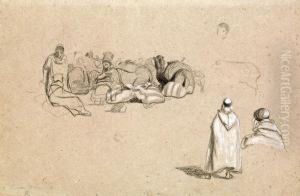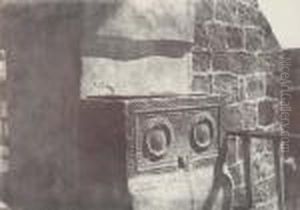Auguste Salzmann Paintings
Auguste Salzmann was a French photographer, painter, and archaeologist born in 1824 in Ribeauvillé, Alsace. He is best known for his early photographic work documenting historical architecture and archaeological sites in the Middle East, particularly in Jerusalem.
Salzmann initially pursued painting and studied at the École des Beaux-Arts in Paris. His artistic journey, however, took a significant turn when he became interested in the relatively new medium of photography. This interest likely developed in the 1840s, during the nascent stages of the medium, which was evolving rapidly following the inventions of the daguerreotype by Louis Daguerre and the calotype by William Henry Fox Talbot.
In the 1850s, Salzmann traveled to the Middle East, driven by a fascination with biblical history and inspired by the Orientalist trends of the time. During his travels, he focused on capturing the landscapes, architecture, and archaeological sites that held religious and historical significance. In 1853, he spent several months in Jerusalem, where he produced a series of photographs that were among the first to document the city's ancient monuments and the surrounding region with such detail and scholarly precision.
Salzmann's methods combined his artistic eye with a meticulous approach to documenting his subjects. He used paper negatives, which were then printed as salted paper prints, a common process of the time. His work was characterized by its clarity and attention to texture and light, qualities that made his photographs stand out.
Upon returning to France, Salzmann's photographs were exhibited and received considerable attention. In 1856, he published a photographic album titled 'Jerusalem: A Study and Photographic Reproduction of the Monuments of the Holy City.' The publication was notable for its scholarly approach, including detailed descriptions and historical context for the images, which contributed to the fields of archaeology and historical studies.
Despite his contributions to photography and archaeology, Auguste Salzmann's work was somewhat overshadowed by his contemporaries. Nevertheless, his photographs remain valuable records of the state of many sites in the Middle East during the mid-19th century. They also illustrate the early use of photography as a tool for documentation and research.
Salzmann's career was cut short by his untimely death in 1872. Despite this, his work continues to be of interest to historians, archaeologists, and art historians for its pioneering role in the application of photography to the study of historic and archaeological sites.

